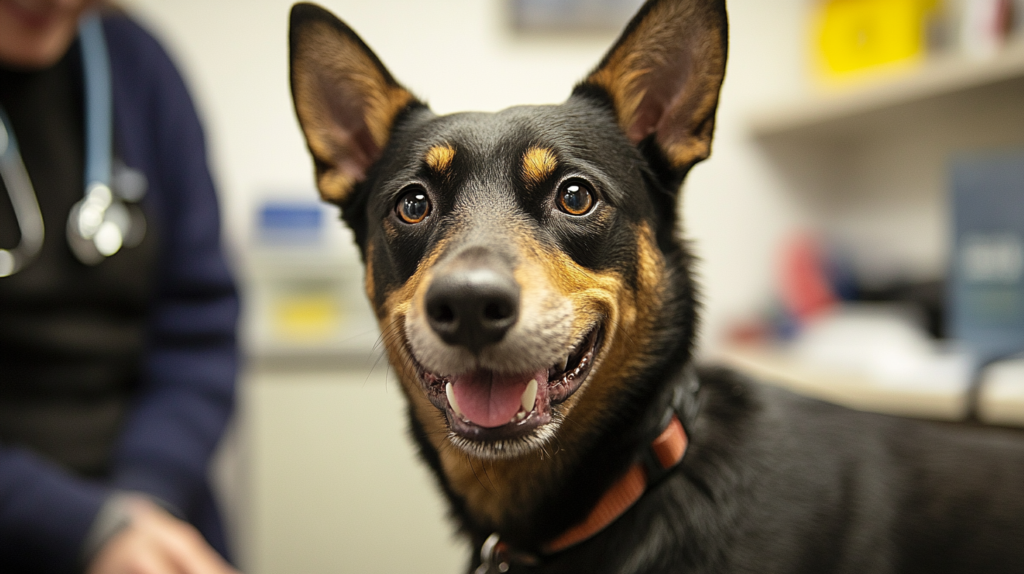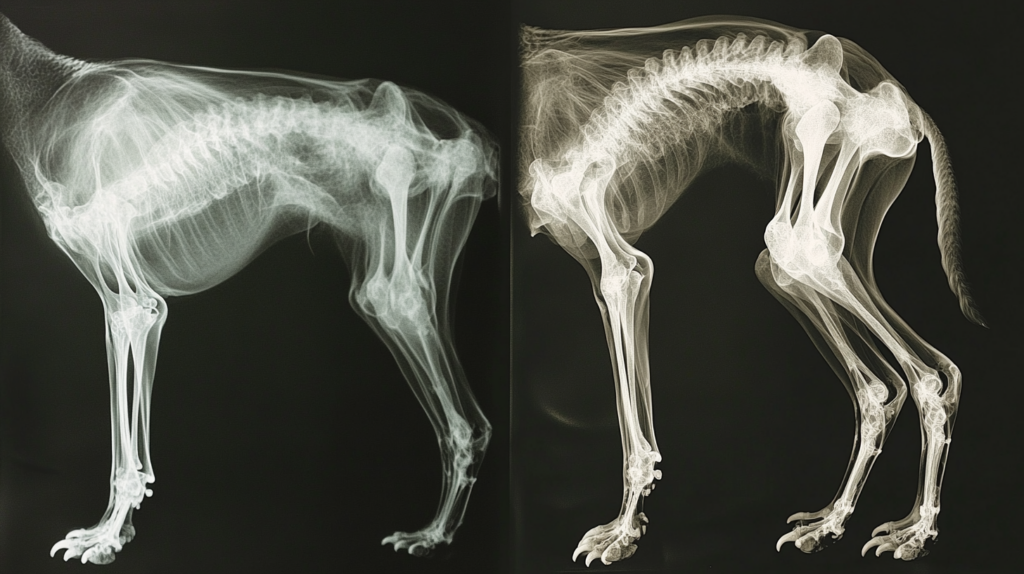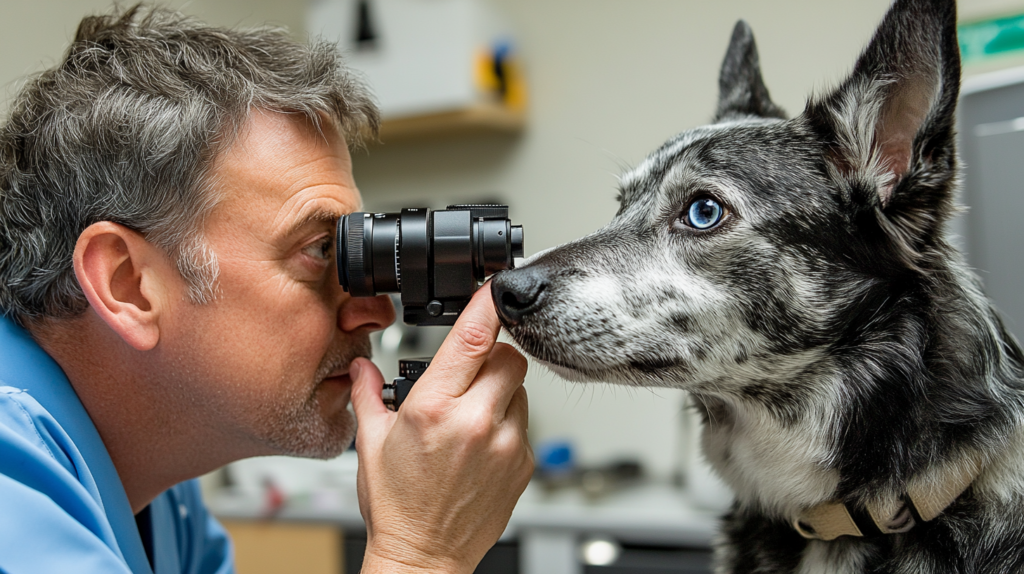Understanding the Australian Kelpie Breed
The Australian Kelpie is an exceptional herding dog breed that originated in the late 19th century. Brought over from Scotland, these intelligent dogs were specifically bred for their herding skills, primarily working with sheep across the expansive Australian landscapes. Their toughness and quick thinking soon made them a favorite among farmers.
Physical Characteristics
- Size: Medium-sized, typically standing 17-20 inches tall and weighing between 35-50 pounds.
- Coat: Smooth and sleek, available in colors like black, red, tan, and chocolate.
- Ears: Distinctive large pricked ears add to their expressive appearance.
Temperament
Kelpies are known for their loyalty and boundless energy. They thrive on regular exercise and mental stimulation, making them ideal companions for active families or individuals. These dogs are intelligent learners who respond well to positive reinforcement training techniques.
Due to their strong herding instincts, Kelpies require early socialization to ensure they get along with smaller animals and children. While they have minimal grooming needs, weekly brushing helps manage shedding.
Understanding the Australian Kelpie health requirements is crucial for ensuring a long, happy life filled with adventure.

General Health Overview of the Australian Kelpie
Are Australian Kelpies healthy dogs? Generally, yes! This breed is known for its resilience and active lifestyle. With proper care, Kelpies can enjoy a robust health status.
Typical Health Status:
- Kelpies typically exhibit good health, but like any breed, they are prone to certain conditions.
- Regular check-ups with a veterinarian help monitor their health and catch potential issues early.
Factors Influencing Australian Kelpie Health:
Genetics:
- Genetic predispositions can influence the likelihood of specific health issues.
- Responsible breeding practices can minimize inherited conditions.
Environment:
- An active lifestyle, as Kelpies thrive in environments where they can run and play.
- A stimulating environment that includes mental challenges helps prevent behavioral problems.
Common Health Concerns Faced by Kelpies:
- Hip Dysplasia: A common concern, particularly in active breeds.
- Progressive Retinal Atrophy: A genetic eye condition impacting vision over time.
- Luxating Patella: This knee joint issue can affect mobility and comfort.
- Cerebellar Abiotrophy: A neurological condition affecting coordination.
Understanding these Kelpie dog health issues empowers owners to take proactive steps in health screening and management. Keeping an eye on signs of discomfort or unusual behavior allows for timely veterinary consultations, ensuring your energetic companion lives a long and happy life.

Lifespan and Aging Concerns in Kelpies
The Australian Kelpie lifespan typically ranges from 10 to 13 years. This energetic breed thrives on activity, but several factors can influence their longevity. Understanding these elements is key to promoting a longer, healthier life for your Kelpie.
Factors Affecting Lifespan
- Diet: A balanced, high-quality diet tailored to their life stage can help maintain optimal health. Look for AAFCO-approved food that meets their energy needs.
- Exercise: Regular physical activity is essential. Kelpies are active dogs that require ample exercise to stay fit and mentally stimulated.
- Genetics: Genetic predispositions may influence overall health. Regular veterinary check-ups can help monitor any inherited conditions.
Signs of Aging in Kelpies
As Kelpies age, certain signs may become apparent:
- Decreased energy levels
- Changes in appetite or weight
- Joint stiffness or difficulty moving
- Behavioral changes, such as increased anxiety or confusion
Managing Aging Concerns
- Regular Vet Visits: Schedule routine check-ups to identify potential health issues early.
- Tailored Nutrition: Adjust their diet as they age; consider senior-specific dog food that supports joint health and overall well-being.
- Gentle Exercise: While Kelpies still need activity, focus on lower-impact exercises like walking rather than intense play.
Recognizing the aging process and adapting care can enhance the quality of life for your Australian Kelpie as they mature. Keeping an eye on their health now ensures more wagging tails later!

Common Health Problems in Australian Kelpies
1. Hip Dysplasia in Kelpies
Hip dysplasia is a significant concern for Australian Kelpies, impacting their mobility and overall quality of life. Understanding the causes, symptoms, and treatment options is essential for any Kelpie owner looking to ensure their furry friend stays happy and healthy.
Causes of Hip Dysplasia
Hip dysplasia is primarily a genetic condition, meaning it often runs in families. Factors contributing to the development of this condition include:
- Genetics: Certain bloodlines may be more prone to hip dysplasia.
- Growth Rate: Rapid growth during puppyhood can stress the hips.
- Obesity: Excess weight puts additional strain on the hip joints.
- Activity Level: Lack of regular exercise can lead to weakened muscles supporting the joint.
Symptoms of Hip Dysplasia
Recognizing the signs of hip dysplasia early can make a significant difference in management and treatment. Watch for:
- Limping or Favoring One Leg: A noticeable limp when walking or running.
- Difficulty Rising: Struggling to get up after resting or lying down.
- Decreased Activity Level: Reluctance to play or take walks that once excited them.
- Stiffness After Rest: Signs of stiffness when first getting up, particularly after long periods of inactivity.
Treatment Options for Hip Dysplasia
If you suspect your Kelpie may have hip dysplasia, consulting with a veterinarian is crucial. Treatment options vary based on severity but can include:
- Weight Management: Maintaining a healthy weight through proper diet can alleviate stress on the joints.
- Physical Therapy: Tailored exercises can strengthen muscles around the hip joint, improving stability and mobility.
- Medications: Anti-inflammatory medications may help manage pain and inflammation associated with hip dysplasia.
- Surgery: In severe cases, surgical options such as hip replacement or femoral head ostectomy may be recommended.
A proactive approach toward managing Kelpie health issues like hip dysplasia will keep your canine companion active and engaged. Regular veterinary check-ups are essential for monitoring joint health, especially as your dog ages.
Understanding Australian Kelpie health means being aware of potential issues like hip dysplasia while also appreciating their energetic spirit and loving nature. With vigilance in recognizing symptoms and seeking appropriate treatment, you can help your Kelpie lead an active and fulfilling life despite health challenges.

2. Progressive Retinal Atrophy: A Genetic Concern in Kelpies
Progressive retinal atrophy (PRA) is a significant genetic eye condition observed in some Australian Kelpies. This disorder leads to the gradual degeneration of the retina, which can ultimately result in vision loss.
Understanding PRA in Kelpies
Genetic Basis: PRA is inherited and can manifest at various ages, often beginning with night blindness before progressing to day blindness.
Symptoms:
- Difficulty seeing in low light
- Bumping into objects
- Reluctance to go for walks in the dark
- Behavioral changes such as increased anxiety
Management Strategies for Affected Dogs
While no cure exists for PRA, several management strategies can help enhance the quality of life for affected Kelpies:
Regular Veterinary Check-ups:
- Regular eye examinations by a veterinarian experienced in canine ophthalmology are essential. Early detection allows for better management of this condition.
Environmental Adjustments:
- Maintain a familiar environment to minimize stress.
- Use consistent pathways and avoid rearranging furniture to help your dog navigate safely.
Training and Support:
- Engage in training sessions that focus on verbal commands and cues since visual cues may no longer be effective.
- Encourage the use of non-visual senses like hearing and smell.
Safety Precautions:
- Consider using padded collars or harnesses to prevent injury during walks.
- Limit exposure to busy areas where your Kelpie might feel overwhelmed.
Awareness of this condition is vital within discussions about Kelpie health issues. Recognizing the signs early can make all the difference for Australian Kelpie health, allowing for timely interventions and adjustments tailored to their needs.

3. Luxating Patella: Understanding this Common Joint Issue in Kelpies
Luxating patella, commonly referred to as a “slipping kneecap,” is a knee joint problem that can frequently affect Australian Kelpies. This condition occurs when the patella (kneecap) dislocates from its normal position, leading to varying degrees of discomfort and mobility issues.
Signs to Look For
Recognizing the symptoms of luxating patella is crucial for early intervention. Common signs include:
- Limping or skipping while walking
- Sudden leg extension or shaking after standing up
- Difficulty in jumping or climbing stairs
- Painful yelping when pressure is applied to the knee
If you observe these behaviors in your Kelpie, a visit to the veterinarian is essential for diagnosis and treatment options.
Preventive Measures
While genetics play a role in luxating patella, certain preventive care strategies can help mitigate risks:
Maintain a healthy weight: Excess weight can increase stress on joints.
Provide regular exercise: Engaging in low-impact activities keeps your dog fit without straining their joints.
Introduce supplements: Omega-3 fatty acids are known for promoting joint health. Consult your vet for the best options tailored to your Kelpie’s needs.
Understanding these Kelpie health issues not only enhances their well-being but also ensures they remain active and vibrant companions. Regular veterinary check-ups are key for monitoring potential concerns such as luxating patella, along with other common conditions like hip dysplasia in Kelpies. Prioritizing Australian Kelpie health through preventive care leads to a happier, healthier life for your furry friend.

4. Cerebellar Abiotrophy: Impact on Behavior and Mobility in Kelpies
Cerebellar abiotrophy is a neurological condition that primarily affects coordination and balance in Australian Kelpies. This genetic disorder occurs when the cerebellum, the part of the brain responsible for motor control, degenerates over time. Understanding this condition is crucial for Australian Kelpie health enthusiasts, as it can significantly impact a dog’s quality of life.
Key Features of Cerebellar Abiotrophy:
Symptoms: Affected dogs may exhibit unusual movements such as:
- Stumbling or falling frequently
- Difficulty with precise movements (like catching a ball)
- Changes in gait, often appearing uncoordinated or wobbly
Behavioral Changes: Dogs with cerebellar abiotrophy may become more anxious or frustrated due to their inability to perform typical activities. Social interactions could be impacted, as their clumsiness might lead to misunderstandings with other pets.
Mobility Impacts:
- The lack of coordination can make everyday activities challenging and may discourage physical exercise, which is vital for Kelpies.
- Owners might notice their Kelpie avoiding jumps or playful activities that require agility.
Awareness and early diagnosis are essential for managing cerebellar abiotrophy in Kelpies. Regular veterinary check-ups can help identify symptoms early on, allowing for tailored care plans that focus on maintaining mobility and comfort for affected dogs. By fostering a supportive environment filled with patience and understanding, owners can enhance the quality of life for their beloved companions facing this challenging condition.

Genetic Conditions Affecting Australian Kelpies’ Health
Australian Kelpies are not only known for their intelligence and herding skills but also for certain genetic traits that can impact their health. It’s crucial for every Kelpie owner to understand these inherited conditions in order to ensure their beloved pets live happy and healthy lives.
1. Collie Eye Anomaly: A Serious Eye Condition Found in Some Kelpies
One of the more significant genetic concerns in Kelpies is Collie Eye Anomaly (CEA). This inherited eye condition affects the development of the retina, which can lead to vision impairment or even blindness. Here’s a closer look at this condition:
What is Collie Eye Anomaly?
- CEA is characterized by abnormalities in the eye structure, particularly affecting the choroid and retina.
- While some dogs may show no symptoms, others might experience severe vision loss.
Symptoms to Watch For:
- Signs of CEA may include difficulty navigating in dim light, bumping into objects, or an unusual reluctance to engage in activities requiring visual acuity.
Genetic Testing and Importance:
- Early detection through dog genetic testing is essential for managing this condition.
- Responsible breeders often conduct tests on breeding stock to avoid passing on these genetic traits to future generations.
Incorporating genetic testing into your routine veterinary care can significantly impact your dog’s health journey. Identifying potential issues early on allows for proactive measures and informed decision-making regarding breeding practices.
Additional Genetic Considerations
The presence of other hereditary conditions in Australian Kelpies further emphasizes the importance of understanding breed-specific health risks. Commonly encountered Kelpie genetic conditions may include:
- Hip dysplasia
- Progressive retinal atrophy
- Luxating patella
These conditions highlight why it is essential for Kelpie owners to maintain regular veterinary check-ups, engage in responsible breeding practices, and stay informed about their pet’s health.
By taking these steps and prioritizing awareness of potential Kelpie eye problems, you not only enhance your dog’s quality of life but also contribute positively to the breed as a whole. The health challenges faced by Kelpies can be managed effectively with vigilance and care from their devoted owners, ensuring these delightful herding companions continue thriving alongside us.
Understanding these genetic conditions equips you with the necessary tools to provide optimal care for your Australian Kelpie, paving the way for a healthier future together.
Preventive Care
Keeping your Australian Kelpie in top shape involves a proactive approach to health care. Regular check-ups and vaccinations are essential to prevent diseases and catch any potential issues early. Here are some key aspects of preventive care:
- Routine Veterinary Visits: Schedule annual visits for vaccinations, health assessments, and dental check-ups. Kelpies can develop dental issues if not monitored.
- Parasite Control: Implement a consistent routine for flea, tick, and worm prevention. Discuss options with your vet to find the best products for your Kelpie.
- Dental Hygiene: Brush your dog’s teeth regularly. Dental chews can also help maintain oral health while keeping them entertained.
- Spaying/Neutering: Consider spaying or neutering your Kelpie to prevent unwanted litters and reduce certain health risks.
- Regular Exercise: Engage in physical activities tailored to their energy levels. Activities like agility training or herding exercises keep their minds sharp and bodies fit.
- Mental Stimulation: Incorporate puzzle toys and training sessions to challenge their intelligence and prevent boredom-related behaviors.
Implementing these preventive measures ensures that your Australian Kelpie enjoys a long, healthy, and happy life! 🐾

Nutrition, Diet, and Exercise
A healthy Australian Kelpie thrives on a balanced diet tailored to its energetic lifestyle. Here are some key considerations for their nutrition:
1. High-Quality Protein
Essential for muscle maintenance, look for dog food with real meat as the first ingredient. Chicken, beef, or fish provide the protein Kelpies need to support their active bodies.
2. Healthy Fats
Omega-3 and Omega-6 fatty acids contribute to a shiny coat and healthy skin. Fish oil supplements can be beneficial.
3. Complex Carbohydrates
Whole grains like brown rice or oats can offer sustained energy. Avoid fillers such as corn or soy that provide little nutritional value.
4. Life Stage Considerations
Puppies require a growth formula rich in calories and nutrients, while adults need a maintenance diet to prevent obesity.
Regular exercise complements a nutritious diet. Kelpies are high-energy dogs that require:
- Daily Walks: At least 60 minutes of walk or playtime.
- Mental Stimulation: Engaging activities like agility training or puzzle toys keep their minds sharp.
Keep in mind that maintaining a healthy weight through diet and exercise is vital for preventing common health issues in Kelpies. Regular veterinary visits help ensure your pup’s dietary needs are being met effectively.

FAQs (Frequently Asked Questions)
What is the average lifespan of an Australian Kelpie?
The average lifespan of Australian Kelpies ranges from 10 to 13 years, depending on various factors such as diet, exercise, and genetics.
What are common health issues faced by Australian Kelpies?
Common health issues in Australian Kelpies include hip dysplasia, progressive retinal atrophy, luxating patella, and cerebellar abiotrophy. Regular veterinary care and preventive measures can help manage these conditions.
How can I ensure the health of my Australian Kelpie?
To ensure the health of your Australian Kelpie, provide regular veterinary check-ups, maintain a balanced diet, ensure adequate exercise, and be aware of any genetic predispositions that may affect their health.
What is hip dysplasia in Kelpies?
Hip dysplasia is a common condition in Australian Kelpies characterized by an improper formation of the hip joint. Symptoms may include difficulty in movement or pain. Treatment options vary from weight management to surgical intervention.
What is Collie Eye Anomaly and how does it affect Kelpies?
Collie Eye Anomaly is a serious inherited eye condition that can occur in some Australian Kelpies. It affects the development of the eye and can lead to vision impairment. Early detection through genetic testing is important for managing this condition.
What preventive care should I provide for my Australian Kelpie?
Preventive care for your Australian Kelpie includes regular veterinary visits, vaccinations, parasite control, dental care, and maintaining a healthy diet along with regular exercise to promote overall well-being.






